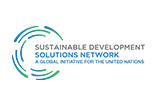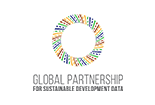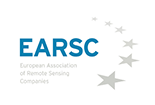Panel on Earth Observations for SDG – Living Planet Symposium 2019
The Panel on “Earth Observations for SDG Indicators” will take place on May 15, 2019 as part of the ESA Living Planet Symposium. The session will include senior representatives from key organizations (Space Agencies, UN agencies, National Statistical Offices, Development Data Enablers) to discuss opportunities and challenges in successfully integrating EO technologies within national monitoring and reporting systems on SDG indicators, leaving no country behind.
The key question that the panel will address is “How EO technology can become a game-changer for countries to fully achieve their sustainable development goals?” The participants will discuss the EO opportunities and challenges from their perspectives, which can be scientific, technical, programmatic, or policy-based in nature.
The objective of the panel is to raise awareness amongst the EO community on the importance to join efforts to offer robust and cost-effective solutions that help countries better achieve their sustainable development goals, monitor progress towards their targets, inform development policies and ensure accountability and transparency, with a specific focus on SDG indicators.
Panel Organization
The panel will be moderated by Maurice Borgeaud (ESA, Head of the EO Department for Science, Applications and Climate) and Steve Ramage (GEO Secretariat, Head of External Relations). The event will start with an introduction by Josef Aschbacher, the ESA Director of Earth Observation Programmes. A number of lightening talks from Space Agencies (NASA, ESA, JAXA and European Commission) will present the importance of EO for the SDG indicators, showcase a number of best practice examples and introduce the challenges and opportunities for countries to integrate EO in national systems and processes. These introductory talks will be followed by a panel made of senior representatives from UN Agencies, National Statistical Offices (NSOs) and SDG data brokers who will discuss how the recent advances in Earth Observations and ICT infrastructures can be fully exploited to serve the 2030 Agenda on Sustainable development and leave no country behind.
To illustrate the importance to build EO capacities in countries and integrate EO technology in national systems and processes, the panelists will discuss 3 main indicators for which EO is seen as a major source of information: SDG 6.6.1 (Change in the extent of water-related ecosystems over time); SDG 15.3.1 (Proportion of land that is degraded over total land area); and SDG 11.3.1 (Ratio of land consumption rate to population growth rate).
Participants
Moderators
Maurice Borgeaud ESA
Head of EO Department for Science, Applications and Climate
Steven Ramage GEO Secretariat
Head of External Relations
Opening
Josef Aschbacher ESA
Director of Earth Observation Programmes
Lightning Talks
Marc Paganini ESA
CEOS SDG AHT co-lead
Argyro Kavvada NASA/ BAH
GEO EO4SDG Executive Secretary
Chu Ishida JAXA
GEO EO4SDG co-lead
Mark Dowell European
Commission
on behalf of DG GROW and DG JRC
Panelists
Sasha Alexander UNCCD,
Policy Officer, Secretariat
Stuart Crane UN Environment,
Programme Management Officer, Freshwater Unit
Dennis Mwaniki UN Habitat
Spatial Data Expert, Global Urban Observatory Unit
Marie Haldorson Statistics Sweden
IAEG-SDG WGGI co-lead
Paloma Merodio INEGI, Mexico
IAEG-SDG WGGI co-lead, GEO EO4SDG co-lead
Claire Melamed GPSDD
CEO
Program
9:00 3 min Introduction to the Panel on SDG indicators by the moderators
9:03 7 min Opening talk by Josef Aschbacher,
ESA Director of Earth Observation Programmes
9:10 30 min Lightening talks by the Space Agencies
(ESA, NASA, JAXA, EC)
9:40 80 min Panel with UN Agencies, NSOs and SDG data brokers
(including 15 min Q&A session with the audience)
11:00 End of the Panel

























